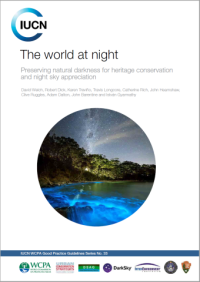Light pollution is the human-caused alteration of outdoor light levels from those occurring naturally. It threatens ecological and commemorative integrity, interferes with amateur and research astronomy, degrades the appreciation of mythologies and cultural practices related to the night sky, mars wilderness experience and landscape beauty, carries risks to human health and wastes energy. Counterintuitively, excess outdoor lighting reduces safety and security. In response to these many threats, not just to astronomy, the International Dark-Sky Association, the Royal Astronomical Society of Canada and Fundación Starlight have operated programmes to certify places that have effective protections against light pollution, impact monitoring, public education and lighting management strategies. There are also several other initiatives outside these three leading programmes that have awarded dark sky status to protected areas. The lessons learnt presented in this report are drawn from case studies of dark sky places certified by the IDA, RASC, Fundación Starlight and other organizations.
Including bibliographic references.

